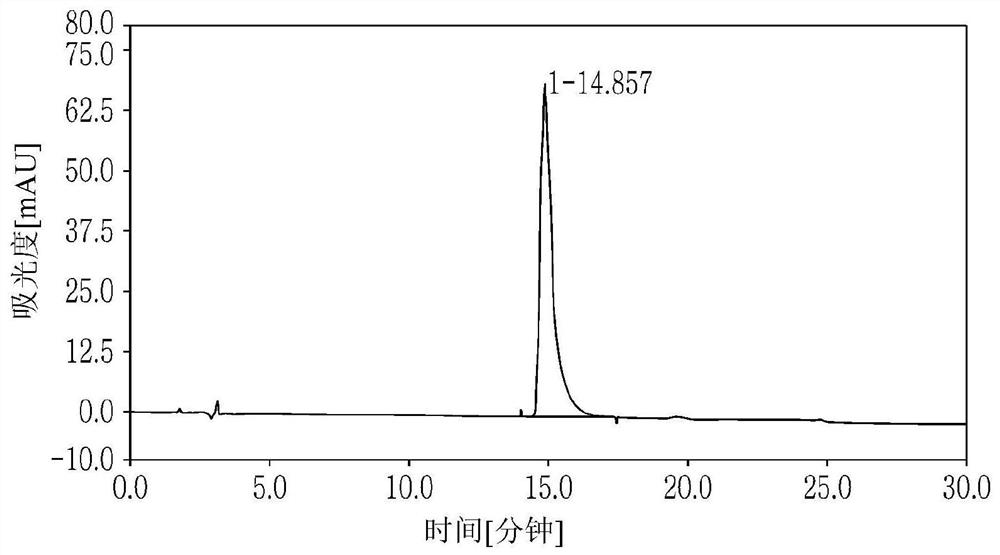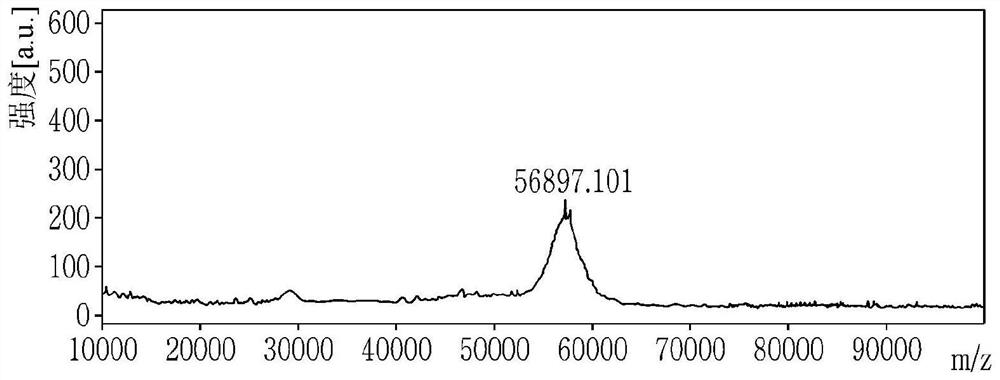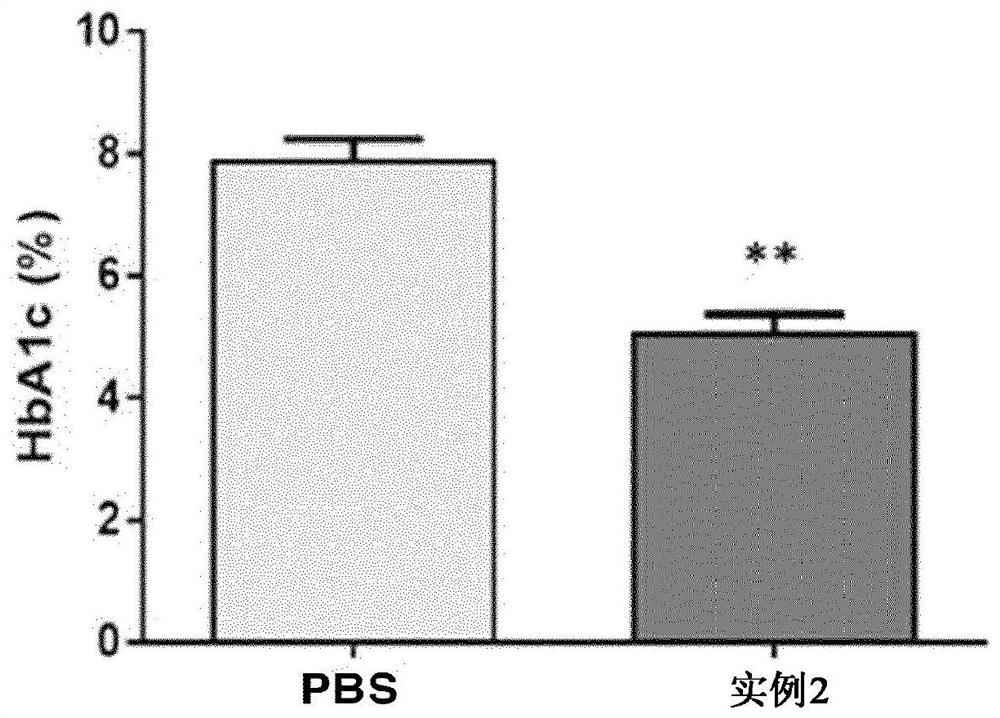Pharmaceutical composition comprising polypeptide
A composition and drug technology, applied in the field of pharmaceutical compositions containing polypeptides, can solve the problems of reduced yield, reduced peptide drug activity, poor reactivity, etc., and achieve the effects of promoting lipolysis, enhancing insulin secretion, and reducing side effects
- Summary
- Abstract
- Description
- Claims
- Application Information
AI Technical Summary
Problems solved by technology
Method used
Image
Examples
example 1
[0154] Polypeptide into which cysteine is introduced (molecular weight: 3,509 Da; SEQ ID NO.2: H(Aib)QGTFTSDYSKYLD E QAA K EFVQWLMNTC).
[0155] Here, underlined and bold highlighted residues in the amino acid sequence of SEQ ID NO. 2 indicate that covalent loops are formed between the residues.
example 1
[0156] Preparative Example 1: Synthesis of Conjugates Comprising Polypeptides and Non-Peptide Polymers
[0157] To prepare a conjugate comprising a polypeptide and a non-peptidic polymer, a polypeptide (molecular weight: 3,509 Da; SEQ ID NO.2: H(Aib)QGTFTSDYSKYLD) with cysteine introduced into the C-terminal region (at position 30) was used E QAA K EFVQWLMNTC) was used as the polypeptide.
[0158] Meanwhile, as listed in Table 2 below, maleimide-activated monomethoxy PEG (mPEG-MAL, NOF (Japan)) was used as the non-peptide polymer.
[0159] To prepare the conjugates of Examples 2 to 7, the polypeptides as listed in Table 2 below were prepared. In this case, each of the polypeptides was dissolved in dimethyl sulfoxide (DMSO), and mPEG-MAL was dissolved in 50 mM phosphate-buffered saline (pH 6).
[0160] [Table 2]
[0161]
[0162] In the amino acid sequences SEQ ID NO. 2 to 4 as listed in Table 2, the two residues underlined and highlighted in bold refer to residues with ...
experiment example 1
[0167] Experimental example 1: the measurement of the in vitro activity of example 2
[0168] In order to examine the preventive or therapeutic effect of the conjugate of Example 2 on obesity, diabetes and non-alcoholic fatty liver disease, using expression GLP-1 (glucagon derivative) receptor and glucagon receptor (GCGR ) cell line for this experiment.
[0169] To determine the activity on the GLP-1 receptor, HEK293 / CRE-Luc cells expressing the human glucagon GLP-1 receptor were purchased from GenScript and used. cells in 5x 10 4 cells / well were seeded in a 96-well plate, and the wells were then treated with: the polypeptide of Example 1 (0.001 to 300 nM), the conjugate of Example 2 (0.001 to 300 nM), native glucagon (SEQ ID NO.1: HSQGTFTS-DYSKYLDSRRAQDFVQWLMNT, 0.013 to 300 nM) and GLP-1 (SEQ ID NO. 6: HAEGTFTSDVSSYLEGQAAKEFIAWLVKGR, 0.001 to 300 nM). Thereafter, the cells in CO 2 The incubation was continued for 4 hours at a temperature of 37° C. in an incubator. Subse...
PUM
| Property | Measurement | Unit |
|---|---|---|
| molecular weight | aaaaa | aaaaa |
Abstract
Description
Claims
Application Information
 Login to View More
Login to View More - R&D
- Intellectual Property
- Life Sciences
- Materials
- Tech Scout
- Unparalleled Data Quality
- Higher Quality Content
- 60% Fewer Hallucinations
Browse by: Latest US Patents, China's latest patents, Technical Efficacy Thesaurus, Application Domain, Technology Topic, Popular Technical Reports.
© 2025 PatSnap. All rights reserved.Legal|Privacy policy|Modern Slavery Act Transparency Statement|Sitemap|About US| Contact US: help@patsnap.com



